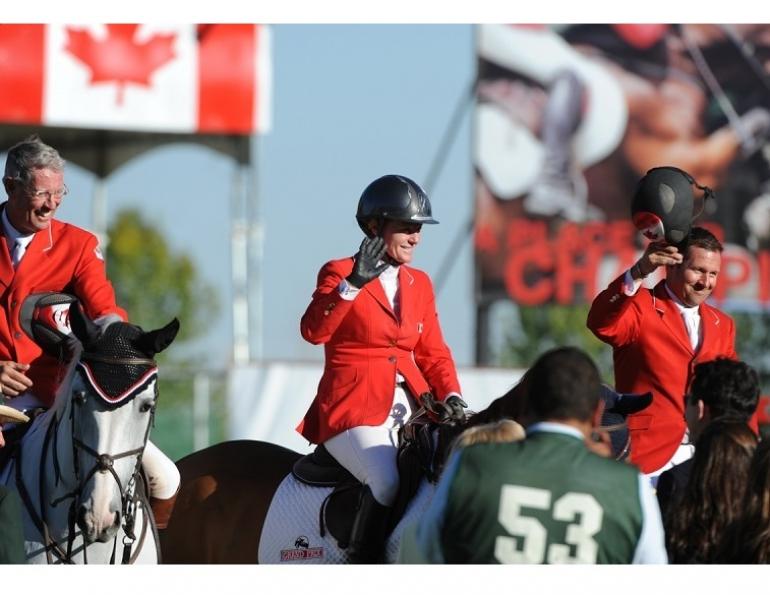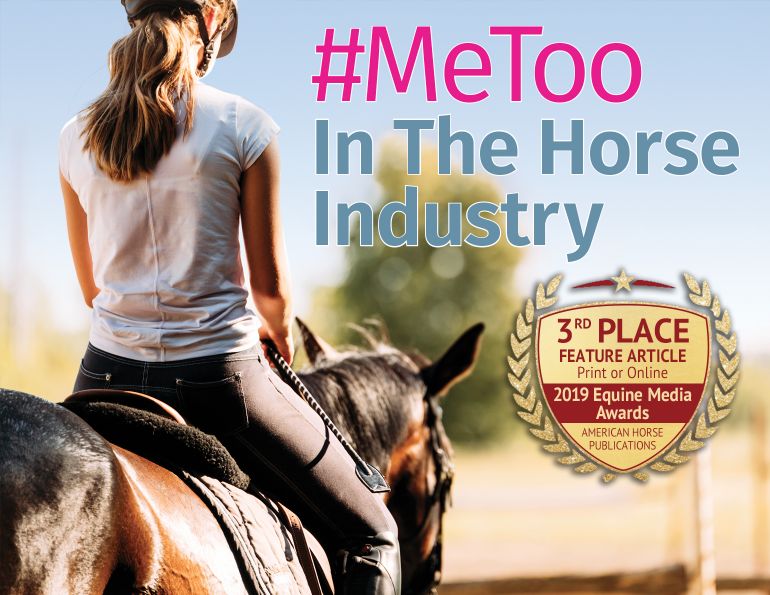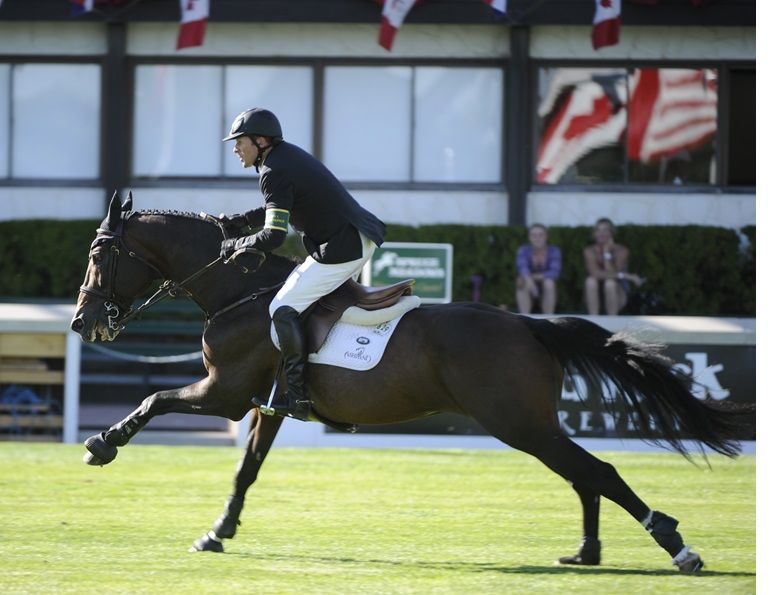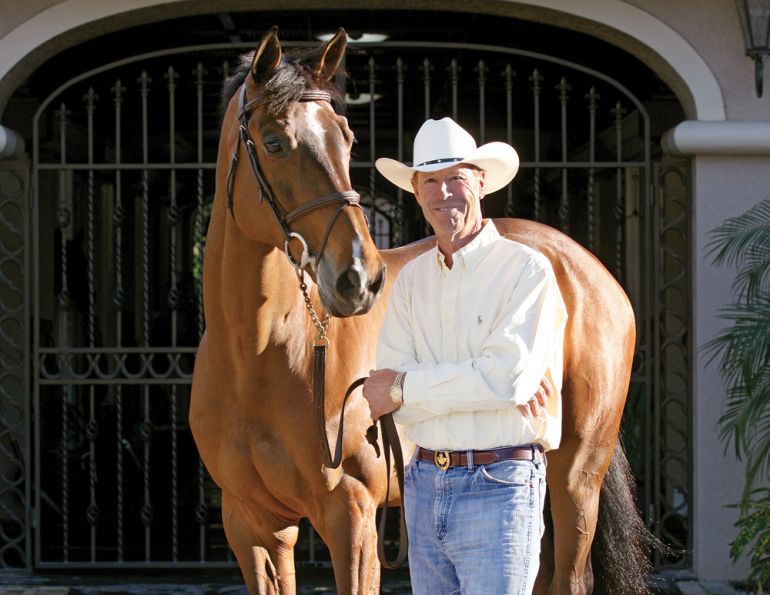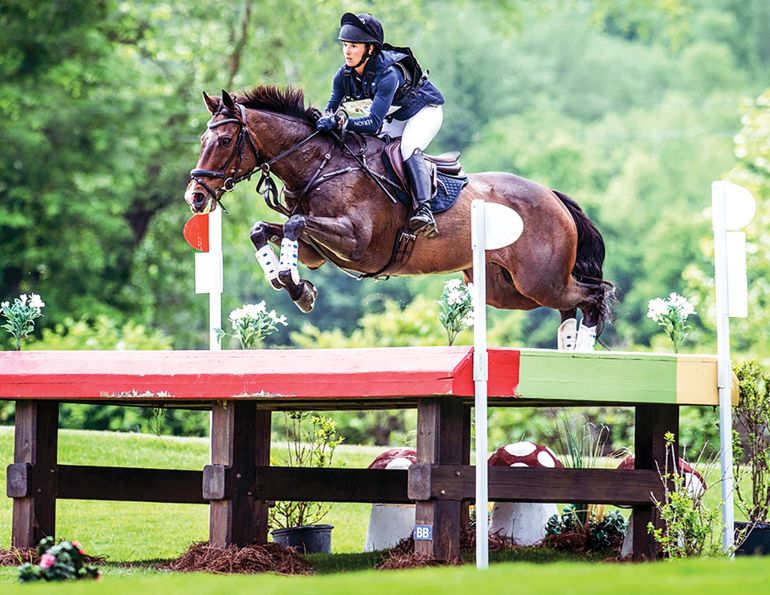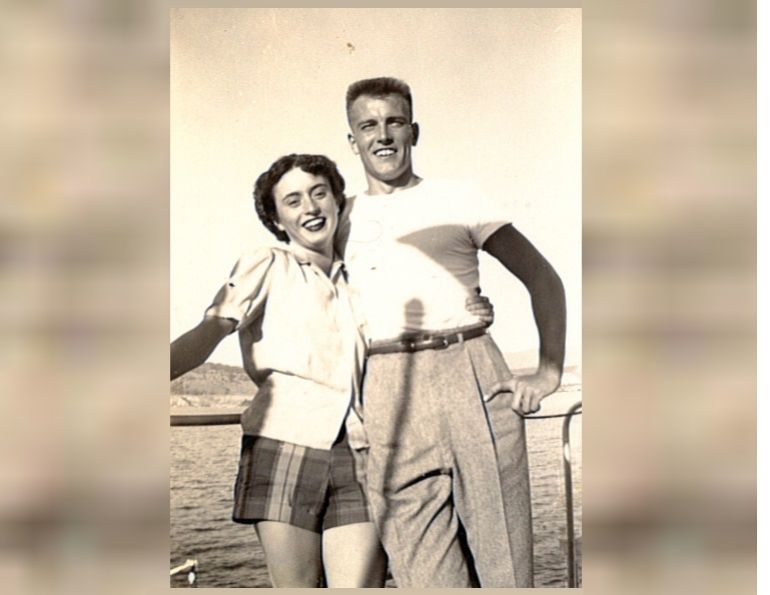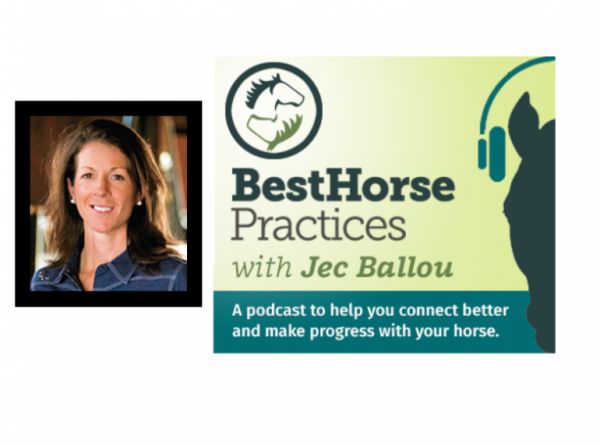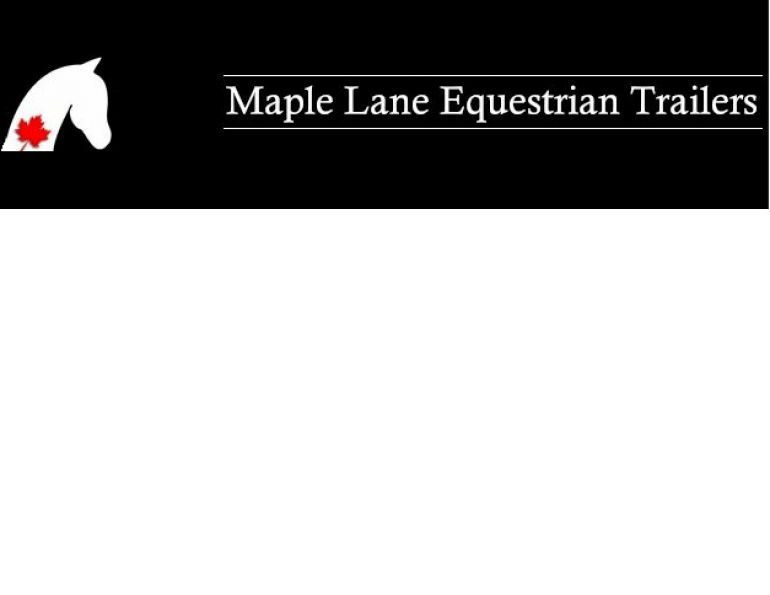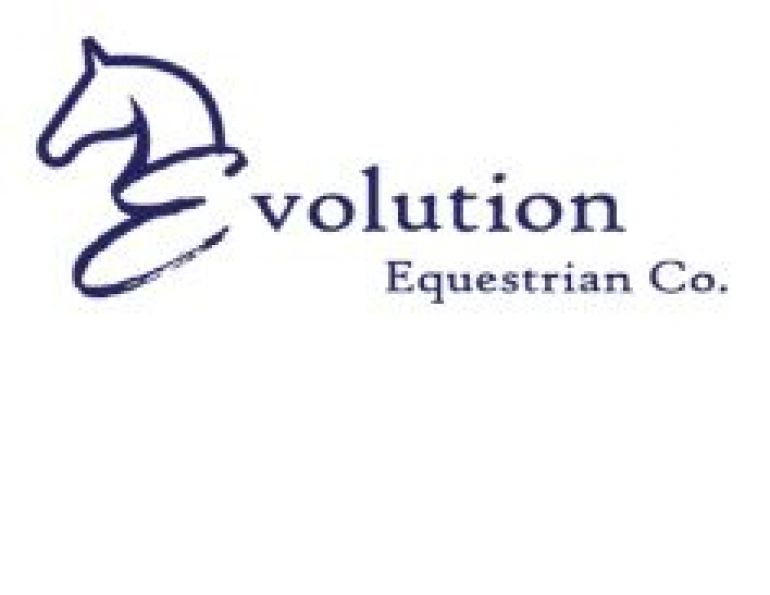This details in this article/interview are relevant to the year it was published (2011)
Interviewed by Melanie Huggett
Beth Underhill is one of Canada’s best known show jumpers, having competed in over 25 Nations’ Cup competitions as well as multiple Olympic Games, Pan Am Games, and World Equestrian Games. I have distinct childhood memories of sitting in front of the TV cheering her on as she and the black Monopoly flew over the fences at Calgary, Alberta’s Spruce Meadows.
Unknown to me then, Underhill won over $1 million in prize money aboard Monopoly, a New Zealand-born Hanoverian gelding, and captured Canadian Show Jumping Championships and two silver medals at the 1991 Pan Am Games. Later on came the bay Dutch Warmblood gelding Altair, whom she rode to a team bronze medal at the 1999 Pan Am Games and a third Canadian Show Jumping Championship.
To the great delight of fans who have missed her appearance on the Canadian Team over the past decade, this year Underhill returned to the Grand Prix ring with a new horse, proving she is still one of Canada’s top international show jumpers. She and Top Gun, a nine-year-old Dutch Warmblood gelding, had a stellar year in 2009 which included being part of the fourth place Canadian Nations’ Cup team at the Spruce Meadows Masters in September.
During a clinic at Maplebrook Farm in Duncan, British Columbia, in late November, 2009, Underhill was kind enough to make time to talk with me about her future plans, her philosophy on riding and training, her support team, and of course, her new horse Top Gun. When you sit down with someone with such an illustrious resume, it is hard to know what to expect. But Underhill was not only gracious, she truly impressed me with her openness, sensibility, and obvious love of the horse. Certainly, she is a rider whom Canadians young and old can proudly look up to and cheer on in the future.
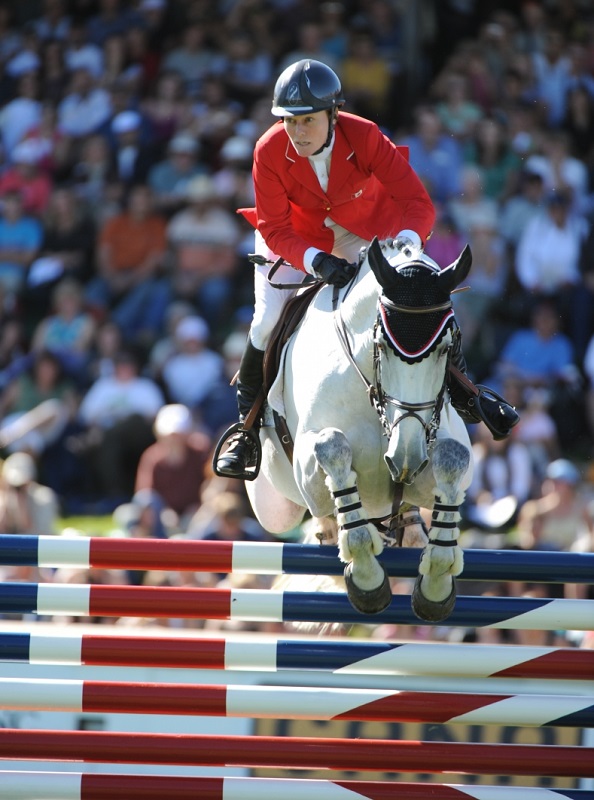
Beth Underhill jumps Top Gun, a nine-year-old Dutch Warmblood gelding, at the Spruce Meadows Masters in September, 2009. Photo: Robin Duncan Photography
Melanie Huggett: You’ve had quite a lot of success in competition this year including being invited back on the Canadian Team at the Masters at Spruce Meadows. How does it feel being back on the Canadian Team and competing at the top level of the sport again?
Beth Underhill: It was pretty sweet. It was ten years exactly since I’d last been on the team; that was when I had Altair and he was second in the du Maurier, which was, I think, the highlight of my career at the time — just how he reacted and responded to the crowd, still being a young horse. So I really had no intention of having such a long hiatus. To be back there with such an exciting prospect as Top Gun really felt quite wonderful. As always, the crowd in Calgary is special. The Masters, the atmosphere, was a great way to return.
MH: Speaking of Top Gun, your main horse now, can you tell me a little about him and where he came from?
BU: Top Gun was imported from Belgium, and he’s been in Canada for about four or five years. I got the ride on him just over a year ago. He was eight years old, so still lacking in a lot of experience. The great thing about Top Gun — we call him Maverick in the stable — is he’s got such generosity of spirit, probably more than any horse I’ve ever ridden. He loves his job and loves to please. He’s a very talented horse. What he doesn’t know and what he doesn’t have in experience, he makes up for by having such a great heart and responding to his rider. We make a great team because he trusts me. He’s really my type: he’s a light-blood horse who is very agile and very responsive and sensitive. I spent a lot of time gaining his trust and his confidence, and I think our partnership has really grown over the last year or 18 months.
MH: What are your competition goals in the future?
BU: My goals for the future would have to include the world championship team next year. Maverick will be ten years old and really coming into his peak. I think he’s ready. I think he has the ability, the scope, and the power that’s required. So with a little bit of luck in keeping both of us in one piece, that would be my major goal for 2010.
MH: How do you prepare for a big competition?
BU: The preparation for competition for both horse and rider really evolves throughout the year. Normally when there’s a big competition coming up, like the Spruce Meadows’ Masters, I would look to peak for a particular event like the Nations’ Cup, so keeping Top Gun’s fitness at its peak is important. I do a lot of fitness training, a lot of aerobic training with him. I don’t jump him tremendously big at home. I would say on the off season in between shows he would jump probably just twice a week. I work a lot on suppling exercises in my flatwork and conditioning work in my jumping, lots of gridwork and patterns that are helping to improve his jumping technique. Then I keep him fresh. We give him one day off and maybe a change in venue where he might go on a little hack or flat somewhere different, and just always keep him interested in his job and enjoying what he does.
MH: Flatwork was something that came up quite a lot in the clinic today. How important is flatwork for a show jumper?
BU: The flatwork in a grand prix horse, or any jumper for that matter, is essential. If you don’t have a horse who is responsive to your aids and moves up from your leg and balances from your hand, you’re not going to be able to navigate the courses today. They’re so technical and the material has become so light and so easy to knock down that these horses have to be so clever and so educated and so responsive to the rider. And we don’t train that over fences, we train that between the fences. Essentially everything that goes on between jumps is flatwork. The majority of the training I do would be on improving and strengthening the horse’s flatwork and making him more adjustable and more responsive to the rider.
MH: Another thing you touched on quite a bit in the clinic today was rider position. Could you talk a little about that and how important it is, and how it could affect your ride either negatively or positively?
BU: Well, when you think about it – a 1200 or 1000 pound horse and a rider on top – the horse’s centre of balance and gravity is so critical. If the rider is off balance by leaning to the side or being incorrect in the aids it can really impact negatively on the horse’s performance. So I really do try to work on instilling correct aids and correct riding skills in the students, because the more you work on it at home, the more automatic or instinctive it becomes in the ring. And so really it’s a matter of repetition and just working on the weaknesses. It’s very easy to be one-sided — we’re all usually more comfortable left handed or right handed – so it’s very important that we build up the strength on both sides so that we’re as comfortable turning and balancing our horse to the right as we are to the left. Something as simple as being straight and centered in our riding is really critical to our horse’s performance.
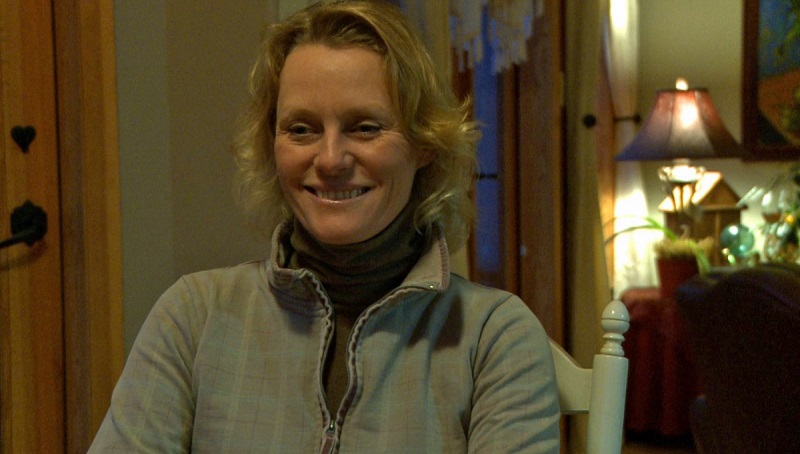
Underhill cares about her horses, putting the time in to gain their trust, and managing them to ensure their health and longevity.
MH: What advice do you have for up-and-coming jumpers who might want to get to that next level in their careers?
BU: It’s really important for young riders to watch, listen, and learn at the top level. As a young rider I spent a lot of time behind the scenes watching the warm-up ring — that’s where you really learn. Of course, you learn a lot watching the actual competition, but if you have the opportunity to go behind the scenes and watch the riders warm up or flat their horses — we always flat and do a little schooling session in the morning to keep the horses limber and adjustable — you can learn a lot from the techniques that the professional riders use. You can learn a lot watching how horses respond and different exercises they do to work on their weaknesses. For young riders, I really impress upon them the importance of watching people who are at the top of their sport, and seeing what they do. Ask questions. If you can get a position as a working student, or help out by grooming at a show — anything that keeps you close to the sport and keeps you close to the top and gives you good information will be really really beneficial.
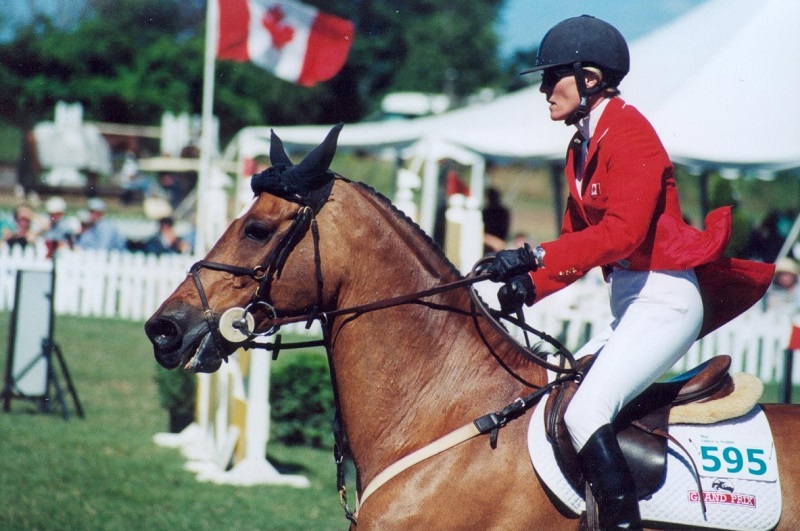
Beth Underhill and Altair at the Collingwood Horse Show. In 1999, Underhill and Altair placed second in the richest show jumping event in the world, the du Maurier International at the Spruce Meadows Masters. Photo: Sandi Henning
MH: In your career, who are the people you’ve looked up to, who have advised you and influenced you as your career was growing?
BU: I started in Pony Club, and at the time we had some really great mentors and people who helped us along the way. Christilot Boylen, who’s a top Olympic dressage rider, was involved in the Pony Club at that time and she gave us lessons. Jimmy Elder and Tommy Gayford were early mentors for me. They gave us help on the weekends with our ponies and gave us encouragement, and that was tremendous.
As I grew older and more proficient, I had the opportunity to train as a working student with Mark Laskin, who is our (the Canadian Team’s) new up-and-coming chef d’equipe for 2011 — that was instrumental in my career. He helped me learn more about what goes on behind the scenes, the management of the horses, and what it takes to keep the horses fit, sound, and healthy. So much of what goes on behind the scenes is managing these horses’ careers, not just what they do in the ring, but helping to keep them strong and safe at home.
And I guess lastly would be Torchy Millar, the current chef d’equipe of the (Canadian) team. I worked for Torchy for several years and had the opportunity to be really involved in a top level stable. That honed my skills and brought everything up a level, and brought more sophistication to my style. He was a tremendous developer of young horses, and that’s something he really instilled in me: giving a horse patience and confidence, and taking your time so the horse learns to enjoy the sport and trust the rider. That’s where you get longevity for these horses, not by trying to rush to the top and then having just a good year or two, but really developing all their skills, and it’s a long long process. I think he probably taught me that the most.

Beth Underhill and Monopoly competing at the Caledon Equestrian Park in Palgrave, Ontario. Photo: Sandi Henning
MH: You touched a little bit on behind the scenes at the competitions. There must be quite a few people who help you out. Could you tell me a little about who those people are and what they do?
BU: We have several grooms who are absolutely essential to the horses’ wellbeing. Phillipa Stanley is my stable manager and she was just named Groom of the Year so that was really exciting. She spends hours and hours a day on the horses’ wellbeing. We work together on implementing the feed program for each horse and the machining and physiotherapy that helps keep the horses healthy. We use magnetic therapy, water therapy, poulticing, massage — all these things that help to keep the horses in tip top form, just as any athlete would utilize. Pip is an essential part of my stable and indispensable for keeping the horses really happy at home and willing to give their best.
Having a great blacksmith is essential to keeping the horses’ feet correct and in good shape. The vets, therapists, and chiropractors all help keep the horses in good shape.
Of course, our friends and family are our support. I’m really fortunate to have a lot of people who come to the shows and help out and are there for me when things go well, and are just as much in my corner when things go poorly. That’s what helps you to stay strong and stay focused, because at the end of the day in our sport, as in most sports, you’re going to lose more than you win. You need to learn to accept the bad times and appreciate the good times, to understand what a partnership it is and how fortunate we are to be able to do what we enjoy as a living and as a profession. I feel very fortunate that every morning when I get up that I do something that really is my passion. I feel really blessed in that respect.
MH: You obviously don’t spend all your time competing. What is your day like when you’re at home on your farm?
BU: Well, I’m an absolute — as you’ve probably figured out — a real animal lover. So I have not only lots of horses, and young horses coming along, but I have several other animals. I have two Jack Russell terriers and two pot belly pigs that I find really give me a lot of solace when I am at home relaxing. I just love their antics and I love spending time with them. The dogs come with me everywhere, and unfortunately the pigs don’t, so when I am home, which isn’t very often, I like to spend a little time with my animals and my friends and family, and just unwind. I spend a lot of time reading and just enjoying the country and my home. I really find those times very precious because, as it turns out, they are quite few and far between and it helps to give me balance and it helps to keep me centred so that when I am competing I can give my best.
Main Photo: In 2009, for the first time in ten years, Underhill was invited to be a part of the Canadian Show Jumping Team, rejoining her old teammates Ian Millar and Eric Lamaze. Credit: Robin Duncan Photography
This details in this article/interview are relevant to the year it was published (2011)



